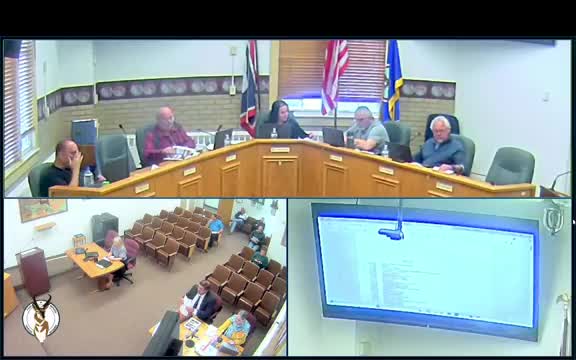City Attorney Pineda Mayberry outlines revisions to Rollins nuisance ordinances
May 24, 2025 | Rawlins City Council, Rawlins, Carbon County, Wyoming
This article was created by AI summarizing key points discussed. AI makes mistakes, so for full details and context, please refer to the video of the full meeting. Please report any errors so we can fix them. Report an error »

The Rawlins City Council is making strides in updating its nuisance ordinances, a move aimed at enhancing community safety and cleanliness. During the recent City Council Work Session and Regular Meeting held on May 20, 2025, City Attorney Pineda Mayberry presented revisions to Chapter 8.16 of the Rawlins Municipal Code, which addresses various nuisances affecting residents.
The council has been working on these ordinance revisions for several administrations, reflecting a long-standing commitment to improving local regulations. The process began with a first reading on March 18, where council members identified the need for changes, particularly regarding the disposal of dead animals. Following feedback, adjustments were made to extend the disposal time, leading to a second reading on April 1.
In response to ongoing discussions, the council also sought to grant authority for the immediate abatement of nuisances, ensuring quicker action can be taken when issues arise. To facilitate these changes, a follow-up meeting was held with key stakeholders, including members from the city attorney's office, municipal court, police department, and community development. This collaborative approach aims to ensure that all parties are aligned and prepared for the upcoming third reading of the revised ordinances.
These updates are significant for Rawlins residents, as they aim to create a cleaner and safer environment. By addressing nuisances more effectively, the city hopes to enhance the quality of life for its community members. The council's ongoing commitment to refining these regulations demonstrates a proactive approach to local governance and community well-being.
The council has been working on these ordinance revisions for several administrations, reflecting a long-standing commitment to improving local regulations. The process began with a first reading on March 18, where council members identified the need for changes, particularly regarding the disposal of dead animals. Following feedback, adjustments were made to extend the disposal time, leading to a second reading on April 1.
In response to ongoing discussions, the council also sought to grant authority for the immediate abatement of nuisances, ensuring quicker action can be taken when issues arise. To facilitate these changes, a follow-up meeting was held with key stakeholders, including members from the city attorney's office, municipal court, police department, and community development. This collaborative approach aims to ensure that all parties are aligned and prepared for the upcoming third reading of the revised ordinances.
These updates are significant for Rawlins residents, as they aim to create a cleaner and safer environment. By addressing nuisances more effectively, the city hopes to enhance the quality of life for its community members. The council's ongoing commitment to refining these regulations demonstrates a proactive approach to local governance and community well-being.
View full meeting
This article is based on a recent meeting—watch the full video and explore the complete transcript for deeper insights into the discussion.
View full meeting